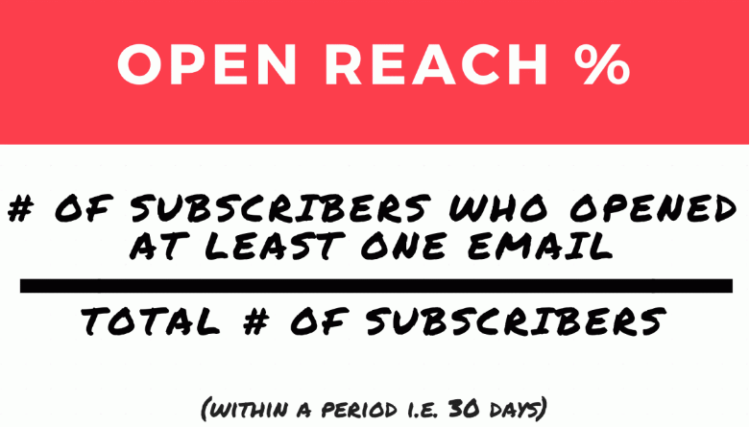Open reach is a fairly new metric to the email marketing world, but it’s one that is far more insightful than open rate.
Here’s our formal definition of the metric:
Open reach is the percentage of subscribers who opened at least ONE email during a set period of time (often, a 30 day period).
And here’s what that looks like as a formula:

Contrary to open rate, open reach is centralized around the number of unique subscribers who opened during a set period of time, and not how many emails were opened. Open reach measures the amount of unique email opens across a given email list. It is specifically different from your open rate because it disregards open volume in favor of unique opens.
This is an important distinction.
Here’s an example to solidify such distinction.
Once again, suppose your email list has 10,000 subscribers, and you send an email campaign once a week. At the end of the month let’s assume you’ve sent a total of 40,000 emails. For the sake of simplicity, let’s assume each email had 2000 unique opens, which would give your campaigns a total of 8,000 opens and an open rate of 20%.
If it were the same 2,000 unique individuals who opened every email, then your open reach rate would be really low and at only 20% of your entire list being engaged.
If 4,000 unique people opened then the open reach would be 40%.
And finally, if it were 8,000 unique people, then the open reach rate would be at 80%!
By tracking the percentage of people who are engaged with your emails (those who opened during a set period of time) rather than the percentage of emails that were opened, you’re going straight to what you’ve always wanted to know in the first place: how many people engage with your emails.
